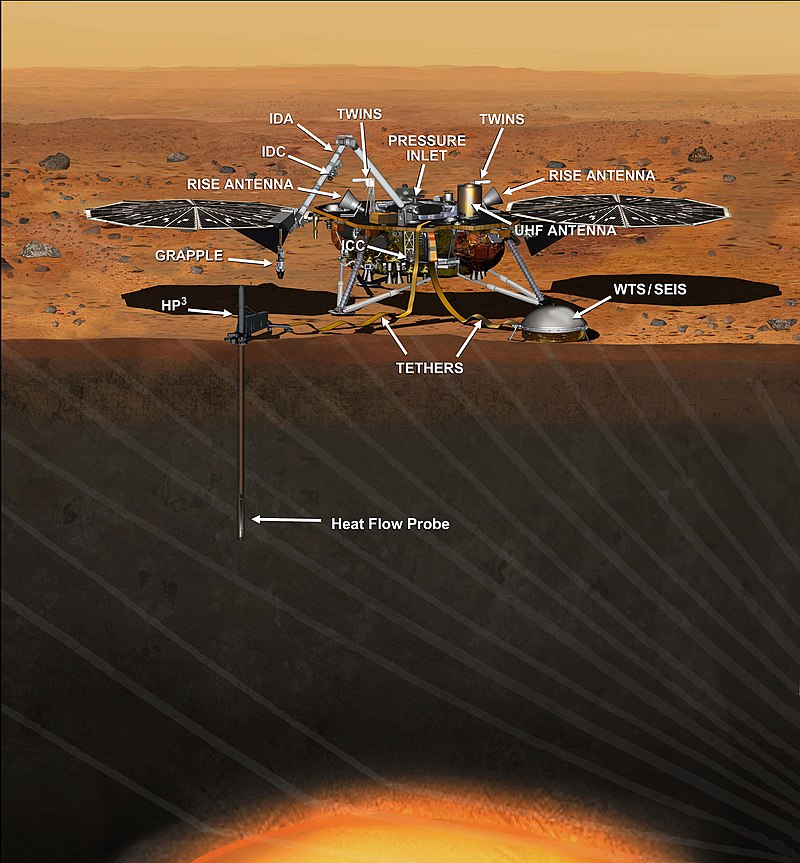Artist's rendering of Astrobotic's Peregrine Lunar Lander, which will take a "Lunar Library," among other payloads, to the Moon in 2020. (Image Source: Astrobotic)
By Glenn A. Walsh
Reporting for SpaceWatchtower
In the latter part of the 19th
century and the beginning of the 20th century, famous
industrialist and philanthropist Andrew Carnegie, who grew-up on the
North Side of Pittsburgh, funded the construction of 2,509 public
libraries worldwide (including 1,689 in the United States), as well
as several academic libraries. Now, a Pittsburgh aerospace company,
Astrobotic, plans to fly a digital library to the Moon, as a way to
preserve human knowledge.
The “Lunar Library” will be
transported to the Moon on Astrobotic's first lunar lander, called
the Peregrine Lunar Lander, in 2020, which will be the first
commercial mission to the Moon. The Peregrine Lunar Lander will also
include time capsules with children's messages and cremated remains
(for a Moon “burial”), as well as a couple small Moon rovers and a
scientific instrument for the Mexican Space Agency.
Astrobotic plans to provide
cost-effective, frequent, and reliable transportation to the Moon for
a variety of clients, including businesses and governments as well as
academic and non-profit organizations. The cost to send an item to
the Moon is $1.2 million per kilogram.
Although the Lunar Library will be
digitized, it will not use regular digital media. Millions of pages
of text and images will be laser-etched onto thin, tiny discs of
nickel (each disc about the size of a U.S. dime-coin), termed “analog
microfiche.” This analog microfiche, which will include the
entire contents of Wikipedia and the Rosetta Project of the Long Now
Foundation (a digital library of human languages), as well as other
informational content to be announced closer to the launch date, is
expected to be invulnerable to the Moon's variable
temperatures and the cosmic radiation that hits the Moon.
It will require a 1,000-power
magnification, optical microscope to read this analog microfiche. It
is expected that this library of human knowledge could last on the
Moon for billions of years!
This Lunar Library will be one of
several “Arch Libraries” expected to be sprinkled around our
Solar System over the next several years. The Arch Mission Foundation
(Arch is pronounced “Ark”, of course, reminiscent of Noah's Ark)
is creating these digital libraries to back-up and help preserve
human knowledge, including Earth's cultural heritages and biological
records, for future generations (and, perhaps, for alien
civilizations visiting our Solar System sometime in the distant
future).
The Lunar Library project will be the
second project sponsored by the Arch Mission Foundation. An Arch
Mission “data crystal,” which contained Isaac Asimov's Foundation
trilogy of science-fiction novels, flew last February on the premiere
flight of the SpaceX Falcon Heavy rocket.
Internet Links to Additional Information ---
Arch Mission Foundation:
Link 1 >>> https://archmission.org/
Link 2 >>> https://en.wikipedia.org/wiki/Arch_Mission_Foundation
Astrobotic:
Link 1 >>> https://www.astrobotic.com/
Link 2 >>> https://en.wikipedia.org/wiki/Astrobotic_Technology
Peregrine Lunar Lander:
Link 1 >>> https://www.astrobotic.com/peregrine
Link 2 >>> https://en.wikipedia.org/wiki/Astrobotic_Technology#Moon_missions
Andrew Carnegie & Carnegie Libraries: Link >>> http://www.andrewcarnegie.
Related Blog Post ---
"Web-Cast: 1st Test Launch of SpaceX Falcon Heavy Rocket Tue. Afternoon."
2018 Feb. 6.
Link >>> http://spacewatchtower.blogspot.com/2018/02/web-cast-1st-test-launch-of-spacex.html
Source: Glenn A. Walsh Reporting for SpaceWatchtower, a project of Friends of the Zeiss.
2018 May 21.
Like This Post? - Please Share!
More Astronomy & Science News - SpaceWatchtower Twitter Feed:
Link >>> https://twitter.com/spacewatchtower
Astronomy & Science Links: Link >>> http://buhlplanetarium.tripod.com/#sciencelinks
Want to receive SpaceWatchtower blog posts in your in-box ?
Send request to < spacewatchtower@planetarium.cc >.
gaw
Glenn A. Walsh --- < http://buhlplanetarium2.tripod.com/weblog/spacewatchtower/gaw/ >
Electronic Mail: < gawalsh@planetarium.cc >
Project Director, Friends of the Zeiss: < http://buhlplanetarium.tripod.com/fotz/ >
SpaceWatchtower Editor / Author: < http://spacewatchtower.blogspot.com/ >
Formerly Astronomical Observatory Coordinator & Planetarium Lecturer, original Buhl Planetarium & Institute of Popular Science, Pittsburgh's science & technology museum from 1939 to 1991.
Author of History Web Sites on the Internet --
* Buhl Planetarium, Pittsburgh:
< http://www.planetarium.
* Adler Planetarium, Chicago:
< http://adlerplanetarium.
* Astronomer, Educator, Optician John A. Brashear:
< http://johnbrashear.tripod.com >
* Andrew Carnegie & Carnegie Libraries:
< http://www.andrewcarnegie.


